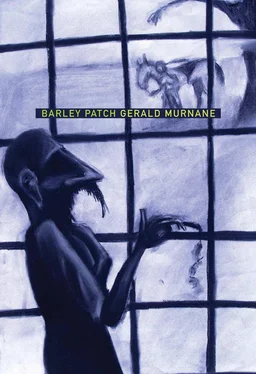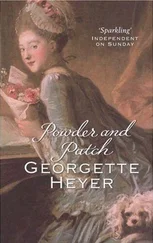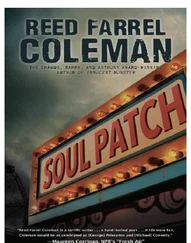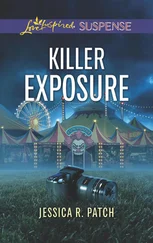Gerald Murnane - Barley Patch
Здесь есть возможность читать онлайн «Gerald Murnane - Barley Patch» весь текст электронной книги совершенно бесплатно (целиком полную версию без сокращений). В некоторых случаях можно слушать аудио, скачать через торрент в формате fb2 и присутствует краткое содержание. Год выпуска: 2011, Издательство: Dalkey Archive Press, Жанр: Современная проза, на английском языке. Описание произведения, (предисловие) а так же отзывы посетителей доступны на портале библиотеки ЛибКат.
- Название:Barley Patch
- Автор:
- Издательство:Dalkey Archive Press
- Жанр:
- Год:2011
- ISBN:нет данных
- Рейтинг книги:5 / 5. Голосов: 1
-
Избранное:Добавить в избранное
- Отзывы:
-
Ваша оценка:
- 100
- 1
- 2
- 3
- 4
- 5
Barley Patch: краткое содержание, описание и аннотация
Предлагаем к чтению аннотацию, описание, краткое содержание или предисловие (зависит от того, что написал сам автор книги «Barley Patch»). Если вы не нашли необходимую информацию о книге — напишите в комментариях, мы постараемся отыскать её.
Barley Patch — читать онлайн бесплатно полную книгу (весь текст) целиком
Ниже представлен текст книги, разбитый по страницам. Система сохранения места последней прочитанной страницы, позволяет с удобством читать онлайн бесплатно книгу «Barley Patch», без необходимости каждый раз заново искать на чём Вы остановились. Поставьте закладку, и сможете в любой момент перейти на страницу, на которой закончили чтение.
Интервал:
Закладка:
The personage happened just then to be recording the progress, furlong by furlong, of a classic race for three-years-old colts and geldings in a place that no one but himself had any knowledge of. He was doing this in much the same way that a male personage was reported to have done similar tasks in my piece of fiction “The Interior of Gaaldine,” which is to say that he had beside him an opened double-page of some or another volume of nineteenth-century fiction and in front of him a handwritten page showing the names of ten or more racehorses and many other details. I looked for only a moment at the handwritten page. This was partly because I might otherwise have violated certain conventions affecting writers and their subject-matter and partly because I have long believed that a glance is the best means for discovering essential details. I saw the names Campanology, Nubian Servant, Rushy Glen, and Wildfell Hall. I saw the words emerald green, lilac , and yellow . I saw also several surnames, none of them belonging to any person that I could recall having met or having read about.
While I walked away from the room and back along the first of the several corridors, I understood for the first time that a personage mentioned in a work of fiction is capable of devising a seeming territory more extensive and more detailed by far than the work itself. On my way to visit the male personage in his upper room, I had looked through each of the open doorways that I passed and had admired the glimpse after glimpse that I had got through window after window of detail after detail of mostly level grassy countryside with trees in the distance. I had been pleased by the spaciousness of my fictional landscape and by the illusion of variety that I got from my sequence of views. On my way back from the upper room, I took no note of the portions of landscapes that flashed at me through the various windows. I could only marvel at the vast and variegated country where lived the owners and the trainers and the jockeys of the throng after throng of horses in the race after race recorded on the page after page in all the steel filing cabinets along the wall of the room that I had come from.
The personage who sat among the filing cabinets had written not a word about the country mentioned in the previous sentence. I had not needed to look into the cabinets in order to learn this. I had understood it in the way that a person understands certain matters in dreams or in the way that an author of fiction understands certain matters relating to the characters in his or her fiction. The personage recorded only names of racehorses, their positions at various points during races, the names of their owners and trainers and jockeys, and the colours worn by those jockeys. The filing cabinets around the personage contained only these details, and yet for every page in those crowded cabinets a suburban street, a country township, an inland plain with mountains in the distance rose to view in a territory as yet unknown to me. I felt the sort of giddiness that I might have felt as a child if I had crept towards the brink of a tall cliff overhanging an ocean or if I had climbed to the topmost vantage-point in a building of several storeys and had seen still no end to the level grassy countryside all around. I had for long supposed that a writer of fiction saw first in his or her mind or even, perhaps, imagined a fictional place inhabited by fictional personages or, as some would say, by characters, and afterwards wrote about that place and those personages. The man among the filing cabinets would have made no claim to be any sort of writer, least of all a writer of fiction. He sat at his desk with his pen in his hand and his page in front of him. The opened book at his left was for him not a fictional text but merely an accumulation in a certain order of the letters of the English alphabet from the varying occurrences of which he was able to calculate the fluctuating fortunes of the racehorses named on the page in front of him. And yet, for every detail that the man recorded I seemed to be made aware of the existence of one more of a barely discernible population who lived out their lives far from the scrutiny of any writer, let alone reader, in some or another Glassland or Gondal or farther-off Gaaldine.
One matter I could not at first account for. Each of the four names that I had seen from among the list of names of three-years-old colts and geldings — each of those names surely alluded to one or another passage in this present work of fiction. But then I supposed that many of the population mentioned in the last sentence of the previous paragraph, whenever they strove to give distinctive names to their racehorses, would have sought out words and phrases relating to the most recondite of matters in the remotest of imaginable regions.
Several years after the bustling afternoon mentioned in the first section of this work of fiction, I read for the first time a later edition of The Art of Memory , by Frances A. Yates, which had been first published in London in 1966 by Routledge and Kegan Paul. I learned from this book for the first time the detailed history of a set of beliefs and practices that I had previously known about only from references in other books. I learned from the book by Frances A. Yates that many a scholar from so-called classical times almost until so-called modern times discussed in theory or used in practice a system that was intended to store for ready retrieval every fact or concept or notion or item of doctrine from any branch of the so-called arts and sciences that the scholar might ever have need of. (During much of the time while the system was in use, printed books did not exist.) A person using the system had first to establish in his or her mind an image of a building, preferably of several storeys each with several rooms. Such a building was often called in the book a memory palace. The person then placed in one after another position in one after another room on one after another storey of the image of the building one after another image of one after another object that would serve afterwards as the perceptible reminder of some or another item requiring to be remembered.
In a later chapter of the book mentioned above, the author tries to explain the contents of a book the unwieldy title of which she replaces by the word Seals (Latin sigilli ). The author of the book is Giordano Bruno, who was burned as a heretic in 1600. Frances A. Yates explains that Giordano Bruno was a follower of the so-called Hermetic philosophy, one item of which seems to have been that each human entity is a replica of the divine organisation of the universe. The same author explains further that the so-called Trinity Seals described, and sometimes depicted, by Giordano Bruno in his book are the simplest visible representation of a memory-system designed to occupy not a palace of several storeys but the universe itself as it was understood by the Hermetics.
I believe I may have learned less from reading books than I have learned from writing books, even those books that I later left off writing. While I was reading about the book mentioned in the previous paragraph, I seemed not to understand what I was reading. I seemed to be trying but failing to see in my mind images of a universe arranged around a vertical axis whereas every image that I had been aware of had been arranged around a horizontal axis. Soon after I had read about the book, however, I understood that I myself had written a book in which was mentioned, if not depicted, the simplest visible representation of a memory-system; a book in which were mentioned, if not depicted, sets of racing colours, racecourses, and even a few racehorses. My memory-system might have seemed to occupy no more than an upper room in a building of two or three storeys, but its figurative extent would have seemed to me no less than old Bruno’s hermetical labyrinth would have seemed to him. Tract after tract of mostly level grassy countryside, each with trees on its farther side — this would have been universe enough for me.
Читать дальшеИнтервал:
Закладка:
Похожие книги на «Barley Patch»
Представляем Вашему вниманию похожие книги на «Barley Patch» списком для выбора. Мы отобрали схожую по названию и смыслу литературу в надежде предоставить читателям больше вариантов отыскать новые, интересные, ещё непрочитанные произведения.
Обсуждение, отзывы о книге «Barley Patch» и просто собственные мнения читателей. Оставьте ваши комментарии, напишите, что Вы думаете о произведении, его смысле или главных героях. Укажите что конкретно понравилось, а что нет, и почему Вы так считаете.












